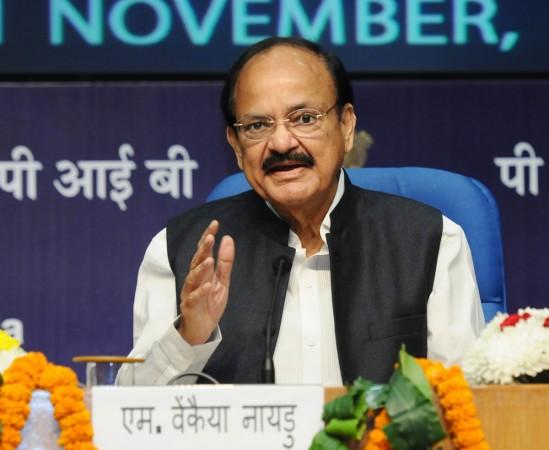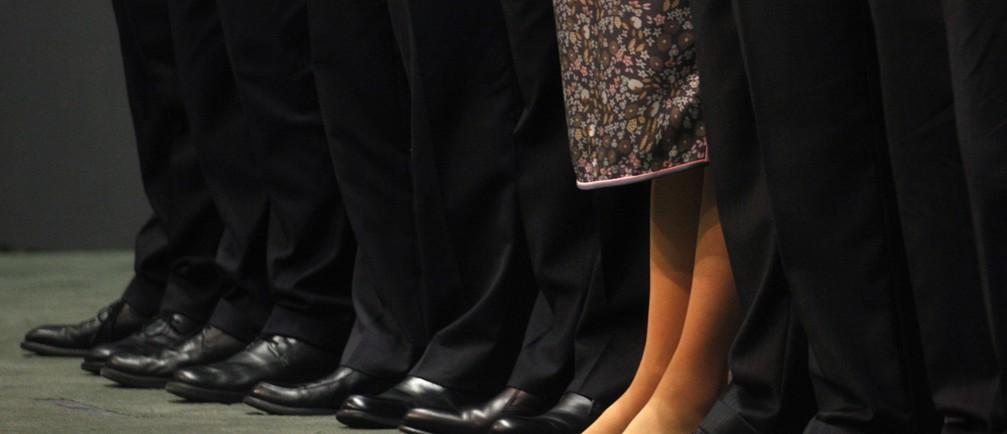As the discussion on the Arms (Amendment) Bill, 2019 was wrapping up, two women MPs asked Rajya Sabha chairperson M Venkaiah Naidu for time to speak on the Bill, that was later passed by the Upper House of the Parliament. On this, the Vice President of India remarked that he did not think women need firearms as "others" would protect them.
"In my opinion, women don't need firearms, others will protect you," he said.

Following this, he allowed one of the women leaders to speak, clarifying that the time allotted for discussion has ended. Bharatiya Janata Party MP Roopa Ganguly said that she had been shooting since childhood and that she enjoyed it.
But the question is, who are the "others" that the vice president thinks will protect women?
Are these the same men who gang-raped and burned alive a veterinary doctor in Telangana on the pretext of "helping" her? Or the ones who set ablaze a 20-year-old gang-rape victim while she was on her way to the court?
What does the data suggest?
Is Vice President Naidu aware of the National Family Health Survey (NHFS-4) released by the Union health ministry which suggests that 30 percent women in the country, since the age of 15, have experienced physical violence?
He may be also does not know that according to World Bank data, violence against women is estimated to cost countries up to 3.7 percent of their GDP in some countries. The figure is larger than what most governments spend on education.
Does the vice president want to mansplain why despite India's growing economy, the country's female labour force participation remains the lowest in the world? While numerous studies have suggested that concerns for personal safety and oppressive social norms are among other causes of decreasing participation, a take on "others" protecting these women should be interesting.
Data related to violence against women
- According to NHFS-4, 30 percent women since the age of 15 have experienced violence.
- Violence against women costs countries 3.7 percent GDP.
- Current labour force participation of women in India is 23.7 percent.
- Only 4.9 percent of Fortune 500 companies have women in leadership positions.
A 2018 NITI Aayog report, which examines key problem areas in India, notes that the current female labour force participation is 23.7 percent (26.7 percent in rural areas and 16.2 percent in urban areas) and the numbers are only declining. Although the number of girls getting an education has risen from 39 percent in 2007 to 46 percent in 2014, the figures have not contributed to a rise in the female workforce.
While this fall has been explained by more girls opting for higher education instead of looking for jobs, the data also suggests a fall in the working rates of older women.
Globally as well, women in leadership positions amount to far lesser numbers than men. Only 4.9 percent of Fortune 500 companies have women in the leadership position. A global study by Deloitte identified Indian women as holding 12.4 percent of board seats and just 3.2 percent of board chairs in 2017, according to BusinessLine.

Maybe the vice president should tell these women that they will be protected by "others" as they step out of their homes to conquer the world.
Meanwhile, somebody should also explain to him that women reclaiming spaces traditionally dominated by men and articulation of their experience should not make him uncomfortable enough to shut them up.
After the horrendous Hyderabad Disha rape and murder case, our respected vice president had said in Rajya Sabha that to tackle heinous crimes like rape, "what is required is not a new bill but administrative will" and "a change of mindset to kill the social evil".
But maybe before the next time he talks about "revisiting rules around gender-based violence", he should revisit his own inherent biases and the sense of privilege he seems to have due to his gender.













